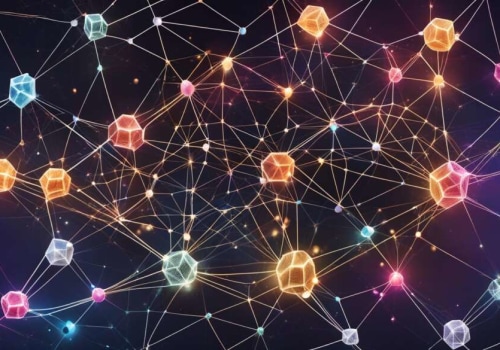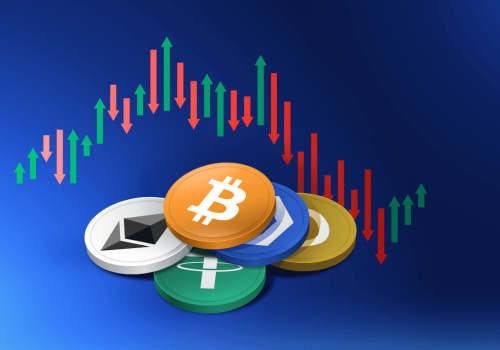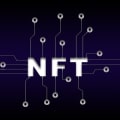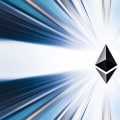Digital art and collectibles have taken the world by storm. With the rise of NFTs (non-fungible tokens), the market for these unique and one-of-a-kind pieces has exploded. People from all over the globe are now able to buy, sell, and trade digital art and collectibles in a way that was never possible before. This revolutionary technology has opened up a whole new world of possibilities for artists and collectors alike, and has completely changed the way we view and value art.
In this article, we will explore the exciting world of digital art and collectibles, and take a closer look at some of the most popular types of NFTs. Get ready to dive into a world of creativity, innovation, and endless possibilities. Welcome to the exciting world of digital art and collectibles! In this section, we will cover the different aspects of digital art and collectibles that are popular among investors and enthusiasts. If you're interested in learning about investing in cryptocurrency, blockchain technology, NFTs, decentralized finance, digital wallets, and tokenization, then you've come to the right place. First, let's start with the basics. Cryptocurrency is a digital or virtual form of currency that uses blockchain technology for secure transactions.
It is decentralized, meaning it is not controlled by any central authority or government. This makes it a popular choice for investors who want to have more control over their investments. Next, let's delve into the potential of blockchain technology. This technology has been gaining a lot of attention in recent years for its various applications. It is essentially a digital ledger that records transactions in a secure and transparent manner.
Blockchain technology has the potential to revolutionize industries such as finance, supply chain management, and even voting systems. Now, let's explore the world of NFTs (non-fungible tokens). NFTs are unique digital assets that represent ownership of a specific item or piece of art. They are built on blockchain technology, making them secure and tamper-proof. NFTs have gained popularity in the art world as they provide a way for artists to monetize their digital creations and for collectors to own one-of-a-kind pieces. We can't talk about digital art and collectibles without mentioning decentralized finance (DeFi).
DeFi is a movement that aims to create an open financial system without intermediaries. It has the potential to disrupt traditional financial institutions and provide more opportunities for individuals to participate in the market. Smart contracts, which are self-executing contracts on the blockchain, play a crucial role in DeFi and are also being used in the digital art market. Lastly, let's discuss the importance of digital wallets and tokenization in managing and trading digital assets. Digital wallets are software programs that store your digital assets and allow you to make transactions.
They provide a secure and convenient way for investors to manage their digital assets. Tokenization, on the other hand, is the process of converting real-world assets into digital tokens. This allows for easier and more efficient trading of assets. By the end of this section, you will have a better understanding of the different types of digital assets and how they are changing the landscape of traditional investments. Whether you're an investor or simply interested in learning more about this exciting new world, we hope this article has provided valuable insights.
Stay tuned for more articles on the world of NFTs and popular types of NFTs.
Cryptocurrency Basics
If you're new to the world of digital assets, it's important to have a basic understanding of cryptocurrency. Cryptocurrency is a form of digital or virtual currency that uses blockchain technology for secure and decentralized transactions. It operates independently of a central bank or government, making it immune to government interference or manipulation. One of the most popular cryptocurrencies is Bitcoin, which was created in 2009. Other well-known cryptocurrencies include Ethereum, Litecoin, and Ripple. These digital currencies can be bought and sold on cryptocurrency exchanges, where their value is determined by supply and demand. But what makes cryptocurrency so unique is its use of blockchain technology.Blockchain is essentially a digital ledger that records and verifies transactions across a network of computers. This makes it nearly impossible to alter or counterfeit transactions, providing a secure and transparent way to transfer funds. In addition to its use as a digital currency, cryptocurrency also has other applications such as NFTs (non-fungible tokens) and decentralized finance. NFTs are unique digital assets that are verified on the blockchain and can represent anything from digital art to collectibles to real estate. Decentralized finance, also known as DeFi, is a growing sector that uses blockchain technology to provide financial services such as lending and borrowing without the need for traditional financial institutions. By understanding the fundamentals of cryptocurrency, you'll have a better grasp of the exciting world of digital assets and their potential for investment and innovation.
Decentralized Finance and Smart Contracts
The Future of Digital Art Investments One of the most exciting and innovative aspects of the digital art and collectibles world is the use of decentralized finance and smart contracts.These technologies allow for a secure and transparent way to buy, sell, and trade digital assets, including NFTs (non-fungible tokens). Decentralized finance, or DeFi, refers to financial applications built on blockchain technology. These applications use smart contracts to automate processes such as loans, trading, and investing without the need for intermediaries. This allows for more efficient and cost-effective transactions, as well as increased security and transparency.
For digital art investors, DeFi offers a new way to manage their assets. By using smart contracts, investors can set rules for how their digital assets can be bought, sold, or traded. This gives them more control over their investments and reduces the risk of fraud or manipulation. In addition, DeFi also allows for fractional ownership of digital assets.
This means that investors can purchase a small percentage of a valuable digital artwork instead of having to buy the entire piece. This opens up opportunities for more people to invest in high-value digital assets and can potentially increase the liquidity of the market. Overall, decentralized finance and smart contracts are revolutionizing the way we invest in digital art and collectibles. They offer increased security, efficiency, and control for investors, making it an exciting time to be a part of this growing market.
Digital Wallets and Tokenization
Digital wallets and tokenization are integral components of the world of digital art and collectibles.These tools allow investors and collectors to easily manage and trade their digital assets. Digital wallets function as a secure storage space for your digital assets, similar to a traditional physical wallet. They use blockchain technology to store your private keys, which are needed to access and transfer your assets. This ensures that your assets are safe and protected from hackers or other malicious actors. Tokenization, on the other hand, is the process of converting a physical asset into a digital token on a blockchain. This allows for fractional ownership and transferability of the asset, making it easier to buy, sell, and trade.
In the world of digital art and collectibles, tokenization has revolutionized the way these assets are bought and sold. Through tokenization, investors and collectors can buy and own a portion of a valuable digital asset, instead of having to purchase the entire thing. This makes it more accessible for individuals with smaller budgets to invest in high-value pieces. Additionally, tokenization allows for easier trading of these assets on secondary markets, providing liquidity for investors. Many digital wallets now have built-in features for managing and trading digital assets. This makes it simple for users to track the value of their assets, buy or sell them on various marketplaces, and even participate in auctions or bidding for rare pieces. Overall, digital wallets and tokenization play a crucial role in the world of digital art and collectibles.
They provide a secure and efficient way to manage and trade these assets, making it easier for individuals to invest in this exciting market.
The World of NFTs
Welcome to the world of NFTs, where digital art and collectibles are taking the market by storm. NFTs, or non-fungible tokens, are unique digital assets that are verified on a blockchain network, making them one-of-a-kind and impossible to duplicate. These tokens have gained popularity in recent years as they provide a way for creators to sell their digital artwork as a form of ownership. This has opened up a whole new world for artists, collectors, and investors alike. But NFTs go beyond just digital art. They can also represent music, videos, tweets, and even virtual real estate.The possibilities are endless and the market is constantly evolving. One of the main advantages of NFTs is their ability to provide proof of ownership and authenticity in the digital world. This is achieved through the use of blockchain technology, which ensures that each token is unique and cannot be replicated or altered. Additionally, NFTs allow for easy and secure transactions between buyers and sellers. With the use of digital wallets and decentralized finance platforms, individuals can easily buy, sell, and trade their NFTs without the need for intermediaries or traditional financial institutions. The demand for NFTs has been steadily increasing and has attracted a wide range of investors and collectors. This has resulted in some NFTs selling for millions of dollars, making it a lucrative market for both creators and buyers. So whether you're an artist looking to showcase your work or an investor looking to diversify your portfolio, the world of NFTs offers endless opportunities and possibilities.
Keep an eye on this exciting market as it continues to grow and evolve in the future.
The Potential of Blockchain Technology
One of the most exciting aspects of digital art and collectibles is the potential that blockchain technology holds for this industry. Blockchain technology is a decentralized, distributed ledger system that allows for secure and transparent record-keeping of transactions. It has gained popularity in recent years due to its use in cryptocurrencies such as Bitcoin and Ethereum, but its potential goes far beyond just digital currencies. Blockchain technology has the ability to revolutionize the way we create, distribute, and consume digital art and collectibles. By using blockchain technology, artists can create unique digital assets that are truly one-of-a-kind and cannot be duplicated or counterfeited.This opens up a whole new world of possibilities for artists, as they no longer have to worry about their work being copied or stolen. But blockchain technology's potential doesn't stop at just digital art and collectibles. It also has numerous other applications, such as in decentralized finance (DeFi) and digital wallets. With DeFi, individuals can use blockchain technology to access financial services without the need for traditional banks or intermediaries. Digital wallets allow users to securely store their digital assets, making it easier to buy, sell, and trade them. Tokenization is another exciting application of blockchain technology in the world of digital art and collectibles.
By tokenizing assets, they can be divided into smaller parts and traded on the blockchain, making them more accessible to a wider audience. This has the potential to democratize the art world, allowing more people to invest in and own valuable pieces of art. The potential of blockchain technology in the world of digital art and collectibles is truly limitless. Its various applications offer new opportunities for artists, investors, and collectors alike. As this technology continues to evolve and grow, we can expect even more exciting developments in the world of digital assets. Digital art and collectibles are revolutionizing the way we think about investments.
With the rise of cryptocurrency, blockchain technology, NFTs, and decentralized finance, there are endless possibilities for individuals and businesses alike. As the market continues to evolve, it is important to stay informed and educated on these digital assets to make wise investment decisions. We hope this article has provided you with valuable insights and sparked your interest in this exciting world.






